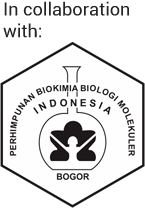Review: Gallotannins; Biosynthesis, Structure Activity Relationship, Anti-inflammatory and Antibacterial Activity
DOI:
https://doi.org/10.29244/cb.8.1.1Abstract
Tannins are one of the main compounds in plants with potential health benefits. Gallotannin is one of the biologically active tannins groups produced by some medicinal plants. Gallotannins is a hydrolyzable tannin compound biosynthesized through gallic acid, shikimic acid, and pentagalloylglucose pathways. Gallotannins can be separated by cascade solvent extraction procedures, column chromatography, and preparative HPLC. This review focuses on the discussion of biosynthesis and structure-activity relationship of tannins as antibacterial and anti-inflammatory. The structure-activity relationship (SAR) and biological activity of gallotannins is caused by the molecular bonds between gallotannins and certain other compounds, especially proteins, which make complex compounds, change physiological and morphological processes in bacterial cells or tissues. The biological activities of gallotannin include anti-inflammatory, anticancer or antitumour, antiviral, antioxidant, antibacterial, and antidiabetic. This review used the Preferred Reporting Items for Systematic Review and Meta-Analyses (PRISMA) method approach in a short, concise, and clear summary about tannins through various references.
Keywords: Biological activities, Biosynthesis, Gallotannins












